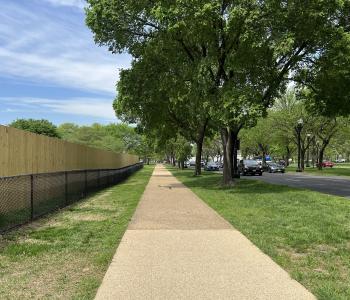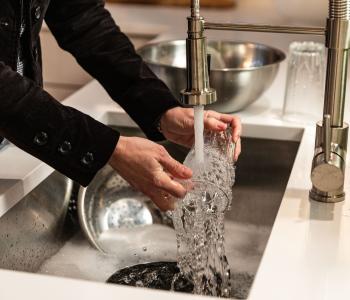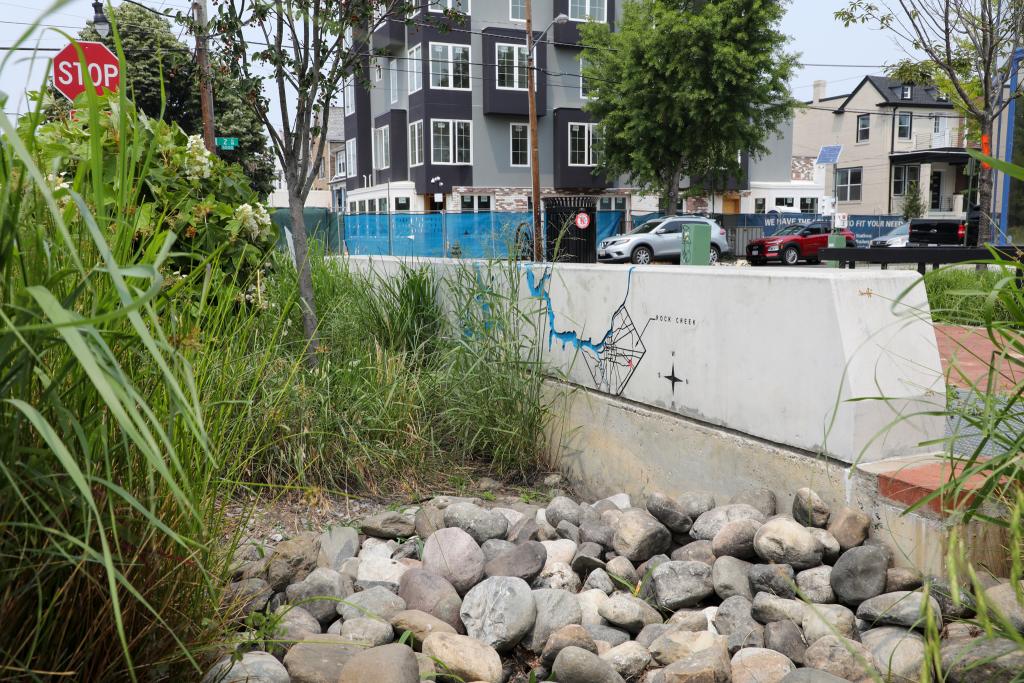Water Agency Responds to Public Concerns about Lead
WASHINGTON, DC In response to a Washington Post article and congressional subcommittee hearing about lead in water and public health, the District of Columbia Water and Sewer Authority (DC WASA) wishes to reassure customers about the safety of the Districts drinking water supply and the accuracy of water quality data.
Todays findings raise questions about the past actions of one of the most reputable public health agencies in the world, said DC WASA General Manager George S. Hawkins. Our agency is committed to maintaining the public trust in todays water supply. We will continue to work tirelessly with the regulatory community, advocacy groups and the general public to test and monitor drinking water, and to disseminate those results.
The news article and congressional investigation relate to levels of lead in blood samples taken from District children in 2004. It is important to note the distinction among federal and local agency responsibilities:
The Centers for Disease Control and Prevention (CDC) analyzed the blood sample data.
CDC does not analyze the levels of lead in drinking water; nor does it measure or regulate water quality.
The United States Environmental Protection Agency (U.S. EPA) sets water-quality standards for municipalities, including the District, under the Safe Drinking Water Act.
The Washington Aqueduct, a unit of the U.S. Army Corps of Engineers, collects and treats drinking water for the District.
DC WASA purchases the treated water and delivers it to customers.
DC WASA works closely with EPA to monitor water quality and report the results.
DC WASA conducts about 31,000 tests of about 9,500 samples every year, taken from the tap at locations throughout the District.
We are absolutely committed to protecting public health by providing safe drinking water, said Hawkins. Lead is a serious issue, and its a preventable one. This agency will continue working to reduce exposure to lead in water and informing our customers about how to do so as well. We will also support any effort to provide more information to the public about our own data collection and monitoring, both past and present.
DC WASA has made significant progress District-wide in reducing household drinking water lead levels far below the EPAs regulatory requirements. Lead in drinking water is an issue that affects individual District homes with lead service lines (the pipe connecting the water main to household plumbing) or internal plumbing and fixtures that contain some elements of lead. To minimize lead in District household drinking water, DC WASA has supported changes in drinking water treatment, implemented a program to assist in replacing full lead service lines, adapted to current and emerging research findings, and worked with local advocates to identify areas for improvement.
As was widely reported, the Washington Aqueducts conversion in November 2000 from free chlorine to chloramine later resulted in a substantial change in lead release in District homes with lead service lines. The Aqueducts addition of orthophosphate to the water treatment process in 2004 was effective in significantly reducing lead release in drinking water, and this practice continues to this day.
Each year, DC WASA works closely with residents to remove lead pipes across the District. In 2008, DC WASA significantly modified its replacement program to encourage full service line replacements among District residents. An accelerated program to replace all public lead service lines in the District was terminated after lead levels declined in 2004, and studies found that partial lead pipe replacements can temporarily increase lead concentrations in tap water.
When lead service lines are replaced, DC WASA provides water filters and replacement cartridges to District residents until lead levels are reduced and delivers information about the risks of lead in drinking water. DC WASA also conducts free lead testing four months after a lead pipe replacement to ensure lead levels have declined. Lead service lines continue to be replaced in conjunction with water main replacement and rehabilitation activities and District Department of Transportation construction activities. DC WASA will also replace the public lead service line if an owner elects to pay for replacing the private side, and has a program to assist low-income homeowners in doing so.
DC WASA continues to conduct research on lead in drinking water. In 2009, the Authority released findings on lead service lines and household galvanized plumbing. The study found that household galvanized plumbing connected to a lead service line can accumulate lead and release it into household drinking water, even after the lead service line is removed. At the time, although the study had not yet been peer reviewed, DC WASA felt its findings should be immediately released to the public.
Customers should contact DC WASA to determine if their water service lines are lead and should remove all potential sources of lead in their household. Residents with lead service lines can contact DC WASA to request free water testing. In addition, DC WASA recommends the following in households with lead plumbing or fixtures, until the sources of lead are replaced:
Run cold water taps for two minutes prior to using water for drinking and cooking when water has not been used for six hours or more.
Use filtered water for drinking if pregnant or under the age of six.
Use filtered water to prepare infant formula or concentrated juices.
NSF-certified filters are effective in removing lead from drinking water.
For additional information or questions on water quality and lead, please contact the DC WASA Water Quality Division at (202) 612-3440 or visit www.dcwasa.com/waterquality. After hours, customers may call the 24-hour Emergency Call Center at 202-612-3400.






